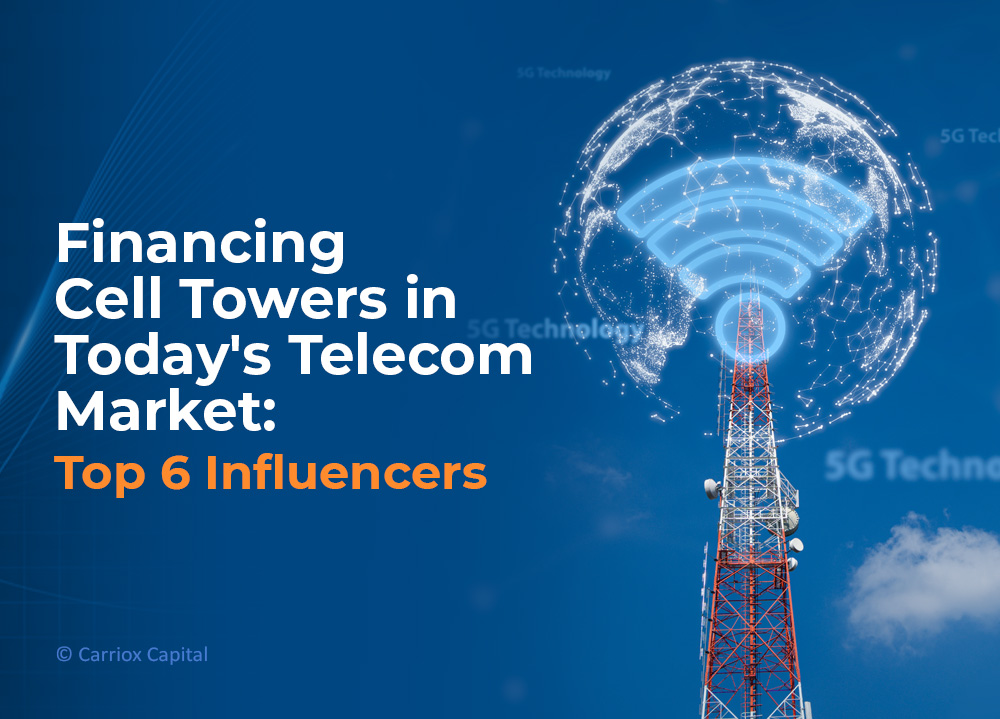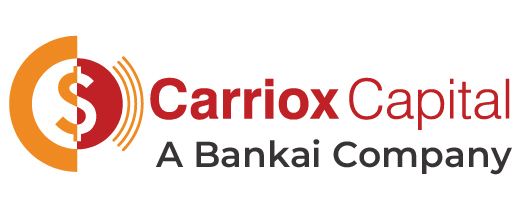Cell Tower Economics 101: Understanding the Financing Landscape

The telecommunications industry boasts diverse participants, ranging from independent towercos leveraging outsourcing trends to established Mobile Network Operators (MNOs) fulfilling rural coverage obligations. With mobile operators anticipated to channel over $600 billion into their 5G networks from 2022 to 2025, the demand for strategic cell tower financing solutions becomes paramount.
In response, cell tower financing companies have emerged as critical players offering tailored financial solutions. These companies specialize in structuring financing arrangements that align with the specific needs of tower deployment, ensuring sustainable growth amidst stiff competition.
Such cell tower loan providers possess specialized knowledge of the influencers shaping the cellular infrastructure landscape. It enables them to customize financing solutions by intricately assessing tower placement regulations, geographical demand patterns, and technological advancements.
Let’s examine the complexities of cell tower economics and the key factors influencing strategic choices for sustained success.
6 Critical Factors Defining Cell Tower Financing Strategies
Location and Demand
Population density and smartphone penetration in a given area directly impact the demand for mobile services, influencing the decision to invest in new towers. Geographic features and income levels further refine the assessment of potential profitability. Strategic tower placement becomes crucial for market differentiation in areas with high competition. Additionally, signal enhancement becomes paramount in densely populated regions, as towers must meet increasing data usage trends and ensure optimal coverage to attract tenants and maximize lease revenues.
Regulatory Environment
Zoning and permitting regulations directly influence the feasibility and cost of tower installations, requiring thorough assessments before investments. Environmental regulation compliance also affects the approval process and potential legal and financial risks. Towercos must establish proactive communication channels with local authorities and conduct comprehensive site assessments to ensure smooth tower deployment and minimize delays. Besides facilitating successful investments, cell tower financing companies may leverage their network and expertise to streamline the regulatory approval process.
Infrastructure Sharing
Co-location allows multiple tenants to share the same tower, maximizing revenue potential and minimizing the need for additional structures. Outsourcing tower infrastructure to independent towercos facilitates growth by expanding the number of customers in each building. However, thorough technical diligence is essential to assess lease-up potential and ensure compatibility with diverse equipment. Successful infrastructure sharing enhances the overall financial viability of cell tower investments, offering a balance between cost-effectiveness and revenue optimization.
Structural Aspects
The choice of structure types, such as monopoles, lattice, or guyed towers, directly influences construction costs and long-term maintenance expenses. Advances in tower design and energy efficiency contribute to the overall sustainability and attractiveness of the investment.
For instance, 5G infrastructure necessitates mounting more and heavier equipment, including massive MIMO antennas. Due to their size and weight, these antennas impose increased wind loading pressure and equipment weight on cell towers, requiring stronger foundations, steel crossbars, anchors, bolts, and guy wires. Consequently, the 5G equipment load directly impacts cell tower build costs, making the construction of 5G towers more expensive than their 4G counterparts.
Asset Ownership and Exclusions
Towercos must meticulously understand which components, such as equipment and infrastructure, are owned by tenants and excluded from the valuation model. Clarifying ownership structures is essential for accurately determining the value of the cell tower. Cell tower loan providers’ decisions hinge on this understanding, impacting negotiations, contractual agreements, and the overall financial outlook.
Risk Involved
MNO consolidation, regulatory uncertainties, and legal risks pose potential threats to cash flows. Understanding barriers to entry, such as regulatory hurdles in developing markets, is crucial for evaluating financial viability. Legal risks, such as uncertainties in lease renewals, demand careful consideration because they may result in the loss of essential tower sites, disrupt long-term revenue streams, and reduce overall profitability. In risk management, proactive cell tower maintenance practices are critical in minimizing operational uncertainties that could affect the financier’s confidence in the long term.
Don’t Miss the Call to Cell Tower Financing for a 5G-Ready Future
While financing cellular infrastructure, cell tower financing companies examine various factors that present unique challenges and opportunities in the telecommunications industry. From the specifics of location and regulatory frameworks to infrastructure sharing and structural considerations, each element contributes to the effectiveness of financing strategies. As towercos continue to expand their networks, recognizing the burgeoning demand for connectivity, they must avoid the pitfalls associated with lease renewals and asset ownership to craft lucrative cell tower financing strategies that stand the test of time.
Carriox’s unique understanding of the carrier business environment makes us a superior alternative to traditional telecom, commissioning, and construction company lending channels. Connect with us today for swift, flexible, and tailored financing solutions.

Nitisha Jain
Nitisha Jain is the Content Manager at Panamax with over 12 years of experience in the industry. She is passionate about creating high-quality, informative, and engaging content for various audiences. In her current role, Nitisha is responsible for developing and executing content strategies for a variety of projects, including blog posts, articles, social media posts, website content, email campaigns, and more. She ensures that all the content published is on-brand and consistent with the company's overall messaging.

